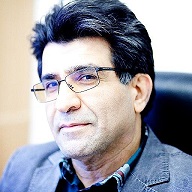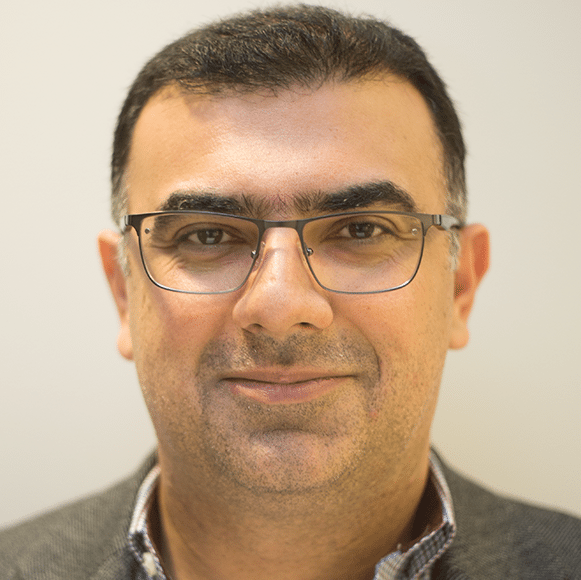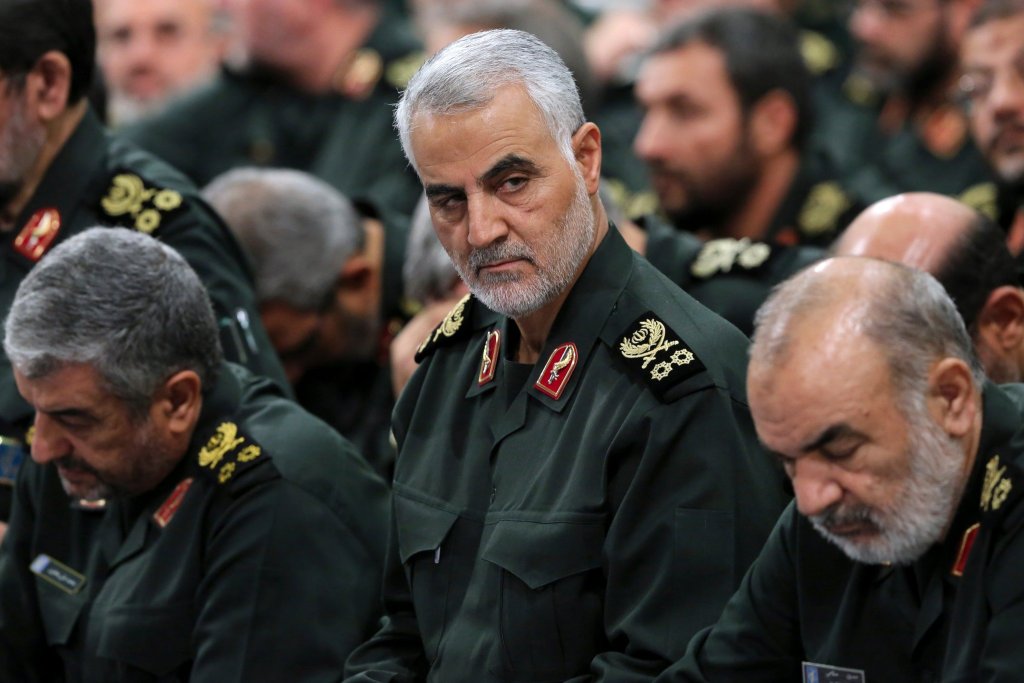Font size:
Print
مهرداد درویش پور
- واژه اتنیک در سطح جهانی مفهومی دقیق و جا افتاده است که میتوان آن را به جای قوم یا ملیت - برای پرهیز از نزاع اسکولاستیک واژه شناسانه در تعریف خود یا بازتعریف "دیگری" به کار برد. گرچه ترجمان فارسی اتنیک همان قومیت است، اما برخی به جای آن مفهوم "خرده ملت" sub-nation)) را بر پایه همان تمایزات اتنیکی یا دینی در درون یک ملت nation) ) به کار می برند. بنا بر تمام تعاریف بین المللی ایران کشوری چند اتنیکی است که فارسی زبان مادری بین دوسوم جمعیت است و بیش از سه چهارم جمعیت کشور به فارسی سخن می گویند. با این همه هیچ یک از "اقلیتهای اتنیکی" بزرگ و میلیونی کشور، نه در حوزه زبان رسمی یا حتی حق آموزش زبان مادری، نه در حوزه سیاست و قوانین اداری و جغرافیایی و نه در حوزه سیاست فرهنگی از حقوق خاصی برخوردار نیستند. بهوارونه، در فرایند شکل گیری آمرانه دولت –ملت در ایران و در پرتو سیاست همانند سازی ((assimilation، موقعیت گروههای اتنیک موسوم به اقلیت به حاشیه رانده شد و تبعیضات اتنیکی و مذهبی بهویژه در میان گروههای اتنیکی غیرشیعه گسترش یافت.
- در تمایز از اتنیک، مفهوم ملت (nation) نه تنها با جغرافیای واحد، بلکه با تشکیل دولت ملی گره خورده است، هرچند آن نیز مفهومی تاریخی، سوبژکتیو و سیال است. با این همه ایران را "کشوری کثیرالملله" خواندن، بیشتر الهام گرفته از میراث بلشویسم و کمینترن از تعریف روسیه تزاری همچون "زندان ملل" است که گفتمان رایج در چپ ایران در گذشته بود. حال آنکه مفاهیمی نظیر "اسارت ملی" و بهتبع آن خواست "رهایی ملی" و حق تعیین سرنوشت تا سر حد جدایی مندرج در منشور حقوق بشر، اساساً اشاره به حق کشورهای اشغالشده یا تحت سلطه دولتهای استعماری یا تقسیمات کشوری زائیده آن روابط دارد.
- هویت اتنیکی بیش از آن که مفهومی ابژکتیو و عینی باشد، مفهومی سوبژکتیو و نوعی ساختمان بندی اجتماعی برخاسته از "حس تعلق" گروهی است که در متن (کنتکست) و شرایط متفاوت می تواند کمرنگ یا پررنگ گردد. امروز تعریف اتنیک بر پایه "ویژگی" بیولوژیک (خونی و خویشاوندی) بیاعتبار شده و به جای آن بر "وِیژگیهای فرهنگی" تأکید میشود. بسیاری بر این باورند که تکیه بر "ویژگیهای بیولوژیک" برای تفکیک موهوم نژادی بهقصد فاصلهگذاری و توجیه برتری نژادی به کار رفته است. درحالی که در قوم شناسی، از "فرهنگ مشترک" همچون عنصری در تحکیم روابط درون گروهی یاد می شود. پرسش این جا است که تا چه حد میتوان بر حس تعلق مشترک گروهی تأکید کرد، بدون آنکه مرز خود با "دیگری" را پررنگ نمود. علاوه بر آن، فرهنگ پدیدهای ایستا نیست و گروههای اتنیکی نیز گروههای یکدستی نیستند که بتوان اشتراک فرهنگی را یکسره مبنای هویتیابی قومی برشمرد. زبان مشترک شاید تنها عنصر ابژکتیو در تعریف هویتهای اتنیکی است که نقش مهمی در فعال نگه داشتن روابط درونی گروه اتنیکی ایفا میکند؛ هرچند برخی دراین مورد نیز تردید دارند. گروههای اتنیکیای وجود دارند که به زبانهای متفاوت سخن میگویند، حال آنکه برخی دیگر بهرغم تمایز اتنیکی به زبان واحدی سخن می گویند.
- شاید گروههایی اتنیکی را بتوان عموماً "گروهی از مردم با زبان و باور به فرهنگ و تاریخ مشترک" تعریف کرد، اما نگرشهای ذاتگرایانه، روابط اتنیکی را به "ویژگی" فرهنگی گروهی خاص در تمایز از "دیگری" فرو می کاهد که با جداسازی "ما" از "آنها" و تعمیم کلیشه گونه آن، بیشتر در گفتمان نژادگرایی به کار می رود. بزرگنمایی حس تعلق و هویت گروههای اتنیکی برپایه "فرهنگ مشترک"، از این خطر برخوردار است که با افسانه پردازی و درکی ایستا از فرهنگ، تصویری یکدست از گروههای اتنیکی ارائه دهد. امری که با واقعیت چندگونگی و دگردیسیهای فرهنگی درون آنها خوانایی ندارد. صرفنظر از خصلت پویای فرهنگ که دائماً در حال تغییراست، وجود چندگانگی فرهنگی، فرهنگ حاکم، خردهفرهنگ و فرهنگ آلترناتیو در گروههای اتنیکی را نمیتوان انکار کرد. هم از اینرو همپوشانی مفهوم فرهنگ و اتنیک به شدت مسئلهبرانگیز است. بگذریم از این که از این نکته نیز نمیتوان درگذشت در حالی که تا کنون نزدیک به 300 تعریف از فرهنگ شده است، منظور از "فرهنگ مشترک" همچون پایه تمایز اتنیکی روشن نیست.
- هویت و تعلق اتنیکی بیش از آنکه مفهومی عام و انتزاعی باشد، مفهومی مبتنی بر متن (کانتکستوئل) و فرایند نوعی از رابطه و کنش متقابل و استنباط فردی و گروهی و درون و بیرونی اتنیکها از خود و دیگری است که تقویت آن درگرو رابطه فعال اعضای گروه های اتنیکی و سازمانهای نماینده آنان است که با مبارزه برای حقوق اتنیکی این "حس مشترک" را به نسل آینده نیز منتقل میسازند.
- روابط گروههای اتنیکی با یکدیگر همچون یکی از جلوههای روابط نابرابر قدرت و سلسله روابط اجتماعی مبتنی بر ستم و تبعیض، حقیقی است. هر نوع تحلیل از روابط اتنیکی که جایگاه قدرت -یا دقیقتر بگوئیم نابرابری قدرت – را از آن حذف کند، با این خطر روبرو است که به جای نقد ساختارهایی که گروههای اتنیکی "اقلیت" را به حاشیه میراند، خود آنها را مسئول موقعیت حاشیهایشان بخواند. این حقیقت که جامعه اکتریت مایل به تعریف خود همچون اتنیک نیست، بلکه معمولاً خود را با تعلق ملی تعریف میکند، بیش از همه ریشه در این واقعیت دارد که از موقعیت فرودست و مورد تبعیض برخوردار نیست و هم ا ز این رو تعلق اتنیکی درآن کمرنگتر است. امری که لزوماً مانع از نگاه تحقیرآمیز و تبعیضآمیز نسبت به اقلیتهای اتنیکی نیست.
- روابط اتنیکی رایج در جهان چهار گونه اند: الف- اقلیتهای اتنیکی بومی که توسط گروه اتنیک اکثریت به حاشیه رانده شدهاند. ب- روابط اتنیکی تبعیضآمیز محصول مهاجرت که درپی تبدیل مهاجرین به گروه اتنیکی اقلیت توسط جامعه اکثریت رخ میدهد ج - گروه های اتنیکی که بین قوم و ملت در نوسانند. آنها گروههای "قومی" هستند که از بلندپروازی ملی و تمایل به تشکیل دولت مستقل ملی برخوردارند. هم از این رو ازآنها به عنوان "قوم-ملت" نام برده می شود (نظیر کردها در خاورمیانه و کاتالون ها و باسکها در اسپانیا). د- روابط اتنیکی چندگانه و پلورال که در آن هیچ یک موقعیت یکسره فرادست یا فرودست ندارند (نظیر بلژیک و سوئیس). تنها در مدل آخر روابط اتنیکی از توازن نسبی قدرت برخوردارند.
- نادیده گرفتن و پردهپوشی نابرابریها و تبعیض ساختاری و نهادینه شده علیه گروههای موسوم به اقلیتهای اتنیکی، به جای گسترش همبستگی اجتماعی و همگرایی دمکراتیک، به گسترش شکاف و تنش های اتنیکی، واگرایی و ایدئولوژیهای "قومی" منجر میگردد. در پرتو نادیده گرفتن ستم یا تبعیض اتنیکی،حفظ تمامیت ارضی و حق حاکمیت ملی راهی جز روشهای آمرانه و تقویت ناسیونالیسم ایرانی در رویارویی با ایدئولوژی های قومگرایانه نمی یابد. امری که تنها به قطببندی بیشتر و تشید تنشهای اتنیکی میانجامد.
- ایدئولوژی "قومی" یا قومگرایی نیز ازآنجا که درپی تقویت یکدستی و هویت اتنیکی است، الزاماً نه به رفع تبعیض اتنیکی منجر میشود و نه تقویت حقوق شهروندی و دمکراسی، بلکه می تواند به واگرایی و تعصبات اتنیکی دامن زند. نیرومند شدن هویتهای ملی و اتنیکی و تمایل به واگرایی بهویژه در نزد گروههایی که در متن جهانی شدن به حاشیه رانده شدهاند، هرچند واکنشی طبیعی است، اما این گرایشات که بیشتر بر نوعی نوستالژیگرایی استوارند، همواره مثبت نیستند.
- در ایران با شکست ایدئولوژیک اسلامگرایی و در متن چالشهایی که ایدئولوژیهای فراگیر و کلان روایت ها همچون سوسیالیسم و لیبرالیسم با آن سردرگریبان اند، شاهد عروج همزمان اما متضاد دو نوع از ایدئولوژیهای بومی (ناسیونالیسم ایرانی و ایدئولوژی های اتنیکی) هستیم. در سطح کشور ناسیونالیسم ایرانی در رویارویی و چالش مفهوم زوال یافته "امت اسلامی" به صورت گسترده رشد کرده است. گرایشی که بر همبستگی ملی تأکید فراوان دارد. همزمان خودآگاهی ضد تبعیض و هویت یابی اتنیکی نیز – از جمله تحت تأثیر فروپاشی بلوک شرق و بهویژه یوگسلاوی و شوروی سابق، تحولات خاورمیانه و تقویت موقعیت کردها – در ایران نیز رشد کرده است. حمایت برخی از قدرتهای خارجی در دامنزدن به تنشهای اتنیکی در تقویت واگرایی اتنیکی در ایران نیز بیتأثیر نبوده و نیست.
- بدون یافتن راه حلی برای رفع تبعیض اتنیکی، تنشهای اتنیکی میتواند در ایران مسیر خطرناکی بپیماید. یافتن این راه حل نیز در گرو گفتگو با نیروهای اتنیکی موسوم به اقلیت و تلاش برای دست یابی به توافقی مشترک است. سیاست خشن انکار خواست های گروه های اتنیکی و سرکوبگرایانه جمهوری اسلامی با بغرنجتر کردن مسئله، تنش اتنیکی در ایران را به بمب ساعتی بدل ساخته است که در خلأ قدرت، میتواند کشور را به سوی جنگ داخلی سوق دهد.
- در برابر دو رویکرد ناسیونالیسم عظمتطلب ایرانی که تنها بر حفظ آمرانه تمامیت ارضی پافشاری کرده و ایدئولوژیهای قومی که با تأکید بر فدرالیسم قومی یا جداییطلبی، واگرایی و تقویت هویت اتنیکی را راه رهایی از موقعیت فرودست خود مییابند، میتوان و باید سیاست سومی را برگزید. سیاست فعال ضد تبعیض (اتنیکی) راه مناسبتری برای رفع شکاف، تبعیض و نابرابریهای اتنیکی و گسترش همبستگی اجتماعی و سیاست جذب و دربرگیرندگی به جای طرد کردن و به حاشیه راندن است. سیاست تبعیض مثبت و به رسمیت شناختن پراگماتیک حتی برخی "حقوق ویژه که چارلز تایلور به آن اشاره دارد، میتواند در کاهش تنشهای اتنیکی نقش بسیار مثبتی ایفا کند.
- سیاست فعال ضد تبعیض بر خلاف ایدئولوژیهای قومی و ملی، نه همانگونه که هابرماس هشدار داده است فرد را ناگزیر از گزینش جاودانه یا اجباری نوعی از هویت جمعی می کند؛ نه با تأکید برهویت جمعی متمایز، فردیت و برابر حقوقی افراد و برابری جنسیتی را به سایه میراند؛ نه لزوم بیطرفی دولت دربرابر تفاوتهای شهروندان را مستقل از تعلقهای گروهی آنان نقض میکند؛ و نه از همه مهمتر دستاویزی برای تبعیض علیه اتنیکهای دیگر یا دیگر گروه های تحت ستم میآفریند. سیاست فعال ضد تبعیض با گسترش مشارکت گروه های به حاشیه رانده شده اتنیکی، خطر دامن گرفتن تعصبات ملی و قومی و یوگسلاویزه شدن کشور و خصومتهای قومی را کاهش می دهد.
- در پرتو سیاست فعال ضد تبعیض (اتنیکی)، دفاع از تمامیت ارضی و حق حاکمیت ملی که بخشی از حقوق بینالمللی و حقوق بشر است و نباید آنرا وامدار حق دیگری کرد، نه تنها با تأمین حقوق برابر گروههای اتنیکی الزاما در تناقض نیست، بلکه میتواند نقطه آغاز مناسبی در راه توسعه همگراییهای دمکراتیک در منطقه، فراسوی مرزهای ملی شود.
- بدین ترتیب حفظ یکپارچگی دمکراتیک ایران در گرو روی کارآمدن نظامی دمکراتیک و گام برداشتن در راستای رفع تبعیض اتنیکی و توزیع عادلانه تر منابع قدرت است. تمرکز زدایی جغرافیایی، خودگردانی، پایان بخشیدن به شکاف مرکز و پیرامون، بهویژه در مناطقی که اقلیتهای اتنیکی درآن اکثریت دارند، تبعیض مثبت برای پر کردن شکافهای اتنیکی و توسعه اقتصادی، بهرسمیت شناختن حق تحصیل زبان مادری یا تحصیل به زبان مادری (که نوع آن و چند وچون امکان پذیری و درجه استفاده عملی از این حق نیازمد بررسی جامع کارشناسانه است) در کنار آموزش زبان فارسی همچون زبان مشترک همه ایرانیان- از جمله گامهایی است که میتواند چندگانگی اتنیکی و فرهنگی درایران را غنا بخشد، بیآنکه با خطر تداوم تبعیض یا تهدید واگرایی روبرو شود.
توضیح: این نوشته فرازهای سخنرانی نگارنده در میزگرد پالتاکی همراه با بهزاد کریمی درباره چالشهای اتنیکی درایران و راه چاره آن است که با مدیریت داریوش پارسا در 31 مارس برگزار شد و برای نخستین بار در سایت زمانه درج شد.






